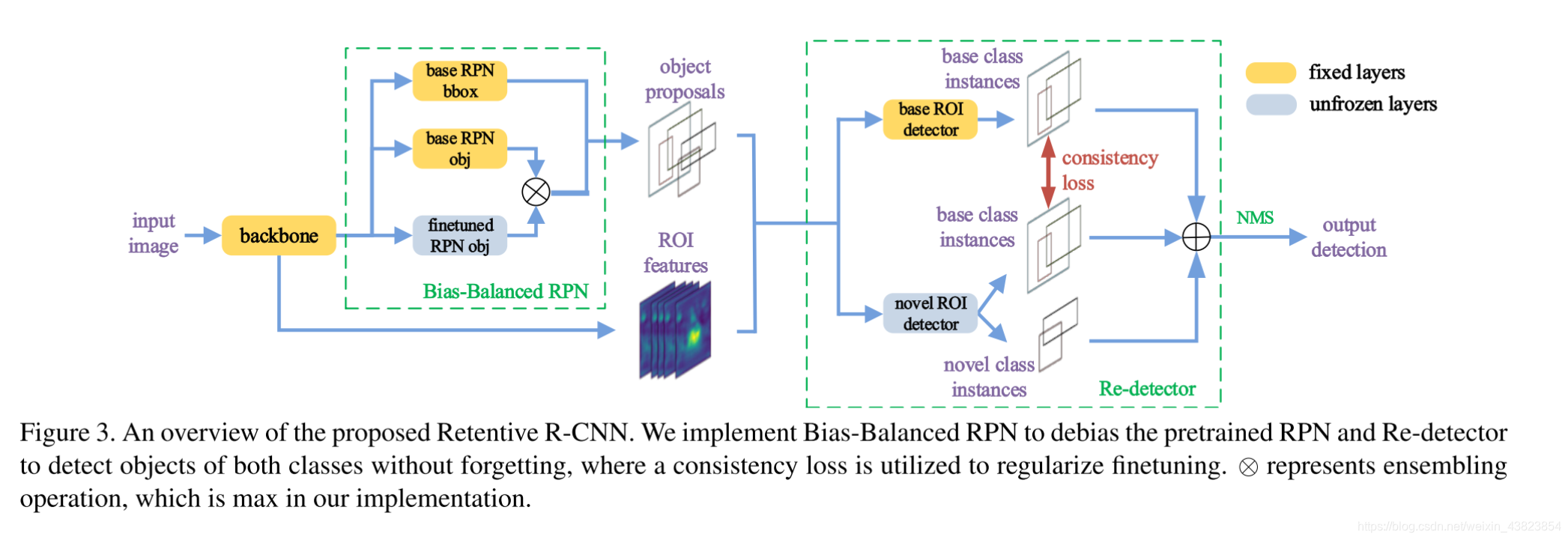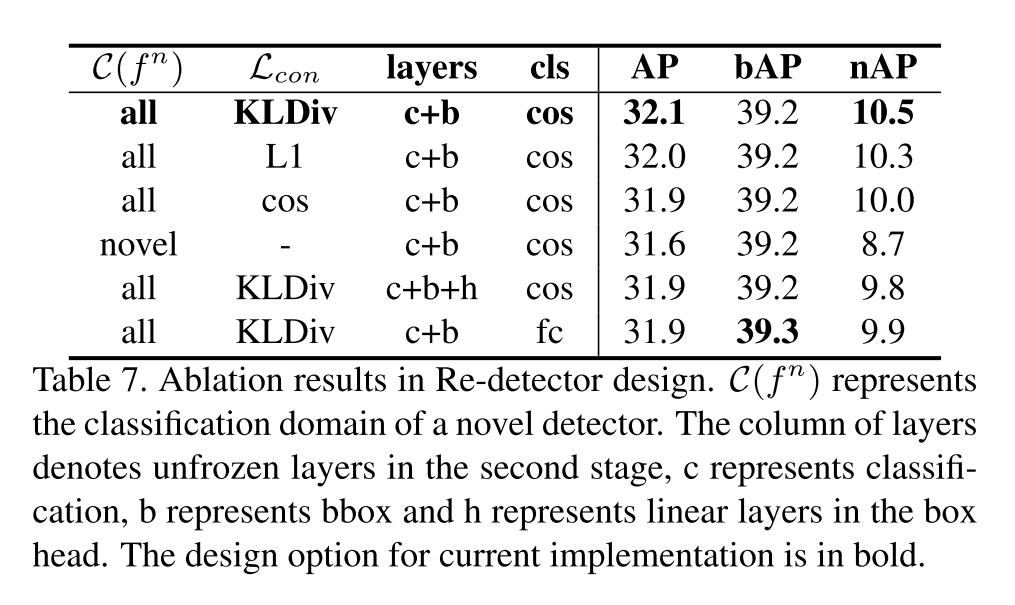本文主要是介绍[Retentive R-CNN] Generalized Few-Shot Object Detection without Forgetting(CVPR. 2021),希望对大家解决编程问题提供一定的参考价值,需要的开发者们随着小编来一起学习吧!

1. Motivation
本文关注于fine-tune后的FSOD模型会在base classes上性能下降的问题。这篇文章构建了Retentive R-CNN,创新点在于Bias-Balance RPN Re-detector,用来在识别novel classes的同时,不降低原有的base classes的精度
- However, the majority focus merely on the performance of few-shot categories and ignore the catastrophic forgetting of base classes, which is not realistic.
Meta-learning方法的缺陷:
由于使用support images,那么如果当support category较多的情况下,那么网络训练的时间复杂度也会增加
- As their computational complexity is proportional to the number of categories, these methods become rather slow or even unavailable when tackling both sets of classes of a dataset
本文还划分了目前FSOD的主要方法,可以分为Meta Learning Based以及 Transfer-learning Baed
-
Meta Learning Based
FSRW、 Meta R-CNN、 Few-Shot Object Detection with Attention-RPN and Multi-Relation Detector、Repmet、 MetaDet
-
Transfer Learning Based
LSTD、TFA、MPSR、Context-Transformer
2. Contribution
- Our contributions can be concluded as follows:
- We find properties of base class detectors neglected in few-shot detection literature, which can be utilized to improve both base and novel class performance for transfer learning based methods with little overhead.
- We propose a few-shot detector without forgetting, Retentive R-CNN, with Bias-Balanced RPN and Re-detector to assist novel class adaptation with base class knowledge and ensemble base and novel class detectors.
- Our method achieves state-of-the-art overall performance on the few-shot detection benchmark[41, 17] across all settings, with leading base class metrics and competitive novel class metrics.
3. Method

3.1 Analysis on Transfer Learning based Few-Shot Object Detection
作者在TFA的基础上,做了以下3个实验 。

3.1.1 Why cosine classifier works?
图2(a)所示,通过L2正则化可以发现novel classs 和base class 被区分开来,并且novel class 和base class 相关性强的,L2正则化后的得分也会比较高。
- The results are shown in Figure2(a). A massive variation of norms between base classes and unseen novel classes can be easily observed.
- Also, the norms of unseen classes with closer relationship with seen classes are relatively higher (blue names annotated in Figure2(a))
3.1.2 Does base detector find novel class salient objects?
答案是否定的,通过图2(c)
the detector is still able to recog- nize it as background.

3.1.3 Is RPN class-agnostic?
本文认为RPN并不是真的无类别的,而是基于对训练的类别有一种偏置。
- RPN is not ideally class-agnostic and biased on its seen categories
3.2 Retentive R-CNN
3.2.1 Re-detector
Re-detector 有2个检测头,分别用于检测base classes 以及 all classes, d e t b det_b detb是fixed 使用FC层,而 d e t n det_n detn是fine-tune weights 使用cossine similar scores,
- Similar to TFA, we finetune merely the last layers of classification and box regression head of d e t n det_n detn


3.2.2 Bias-Balanced RPN
在Bias-Balanced RPN中加入了 unfixed objectness 分支。
- We try to unfreeze different layers of RPN for finetuning and empirically, unfreeze the final layer that predicts objectness is sufficient to produce a noticeable improvement.
- 最后将2个objectness的得分值取max, O n H × W = m a x ( O b H × W , O n H × W ) O^{H\times W}_n = max(O^{H \times W}_b, O^{H \times W}_n) OnH×W=max(ObH×W,OnH×W)。

3.3.3 Training and Inference
本文unfreeze的层包括了以下3个部分,rpn 的objectness部分(rpn的box-regression部分冻结), RoI-Head的分类和回归层。
- As aforementioned, we only unfreeze three layers: ob- jectness of the finetuned RPN, the last linear layers of clas- sification and box regression of d e t n det^n detn
并且相对于TFA在fine-tune阶段训练的
4. Experiment
4.1 Results on MS-COCO
[外链图片转存失败,源站可能有防盗链机制,建议将图片保存下来直接上传(img-VS9R6MvW-1629258529624)(https://i.loli.net/2021/08/18/wrejNcfxsJtk6DC.png)]
4.2 Results on PASCAL VOC
[外链图片转存失败,源站可能有防盗链机制,建议将图片保存下来直接上传(img-5HCXribP-1629258529625)(https://i.loli.net/2021/08/18/ETzMJ9rNpHtYVSw.png)]
4.3 Ablation Experiments
4.3.1 Bias-Balanced RPN

4.3.2 Re-detector

4.3.3 Inference time

这篇关于[Retentive R-CNN] Generalized Few-Shot Object Detection without Forgetting(CVPR. 2021)的文章就介绍到这儿,希望我们推荐的文章对编程师们有所帮助!








